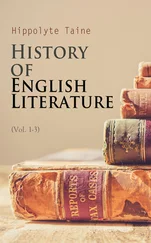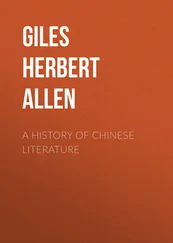Arthur Anthony MacDonell - A History of Sanskrit Literature
Здесь есть возможность читать онлайн «Arthur Anthony MacDonell - A History of Sanskrit Literature» — ознакомительный отрывок электронной книги совершенно бесплатно, а после прочтения отрывка купить полную версию. В некоторых случаях можно слушать аудио, скачать через торрент в формате fb2 и присутствует краткое содержание. Жанр: foreign_prose, foreign_antique, на английском языке. Описание произведения, (предисловие) а так же отзывы посетителей доступны на портале библиотеки ЛибКат.
- Название:A History of Sanskrit Literature
- Автор:
- Жанр:
- Год:неизвестен
- ISBN:нет данных
- Рейтинг книги:5 / 5. Голосов: 1
-
Избранное:Добавить в избранное
- Отзывы:
-
Ваша оценка:
- 100
- 1
- 2
- 3
- 4
- 5
A History of Sanskrit Literature: краткое содержание, описание и аннотация
Предлагаем к чтению аннотацию, описание, краткое содержание или предисловие (зависит от того, что написал сам автор книги «A History of Sanskrit Literature»). Если вы не нашли необходимую информацию о книге — напишите в комментариях, мы постараемся отыскать её.
A History of Sanskrit Literature — читать онлайн ознакомительный отрывок
Ниже представлен текст книги, разбитый по страницам. Система сохранения места последней прочитанной страницы, позволяет с удобством читать онлайн бесплатно книгу «A History of Sanskrit Literature», без необходимости каждый раз заново искать на чём Вы остановились. Поставьте закладку, и сможете в любой момент перейти на страницу, на которой закончили чтение.
Интервал:
Закладка:
The poets love to dwell on his various births, forms, and abodes. They often refer to the daily generation of Agni by friction from the two fire-sticks. These are his parents, producing him as a new-born infant who is hard to catch. From the dry wood the god is born living; the child as soon as born devours his parents. The ten maidens said to produce him are the ten fingers used in twirling the upright fire-drill. Agni is called “Son of strength” because of the powerful friction necessary in kindling a flame. As the fire is lit every morning for the sacrifice, Agni is described as “waking at dawn.” Hence, too, he is the “youngest” of the gods; but he is also old, for he conducted the first sacrifice. Thus he comes to be paradoxically called both “ancient” and “very young” in the same passage.
Agni also springs from the aërial waters, and is often said to have been brought from heaven. Born on earth, in air, in heaven, Agni is frequently regarded as having a triple character. The gods made him threefold, his births are three, and he has three abodes or dwellings. “From heaven first Agni was born, the second time from us ( i.e. men), thirdly in the waters.” This earliest Indian trinity is important as the basis of much of the mystical speculation of the Vedic age. It was probably the prototype not only of the later Rigvedic triad, Sun, Wind, Fire, spoken of as distributed in the three worlds, but also of the triad Sun, Indra, Fire, which, though not Rigvedic, is still ancient. It is most likely also the historical progenitor of the later Hindu trinity of Brahmā, Vishṇu, Çiva. This triad of fires may have suggested and would explain the division of a single sacrificial fire into the three which form an essential feature of the cult of the Brāhmaṇas.
Owing to the multiplicity of terrestrial fires, Agni is also said to have many births; for he abides in every family, house, or dwelling. Kindled in many spots, he is but one; scattered in many places, he is one and the same king. Other fires are attached to him as branches to a tree. He assumes various divine forms, and has many names; but in him are comprehended all the gods, whom he surrounds as a felly the spokes. Thus we find the speculations about Agni’s various forms leading to the monotheistic notion of a unity pervading the many manifestations of the divine.
Agni is an immortal who has taken up his abode among mortals; he is constantly called a “guest” in human dwellings; and is the only god to whom the frequent epithet gṛihapati , “lord of the house,” is applied.
As the conductor of sacrifice, Agni is repeatedly called both a “messenger” who moves between heaven and earth and a priest. He is indeed the great priest, just as Indra is the great warrior.
Agni is, moreover, a mighty benefactor of his worshippers. With a thousand eyes he watches over the man who offers him oblations; but consumes his worshippers’ enemies like dry bushes, and strikes down the malevolent like a tree destroyed by lightning. All blessings issue from him as branches from a tree. All treasures are collected in him, and he opens the door of wealth. He gives rain from heaven and is like a spring in the desert. The boons which he confers are, however, chiefly domestic welfare, offspring, and general prosperity, while Indra for the most part grants victory, booty, power, and glory.
Probably the oldest function of fire in regard to its cult is that of burning and dispelling evil spirits and hostile magic. It still survives in the Rigveda from an earlier age, Agni being said to drive away the goblins with his light and receiving the epithet rakshohan , “goblin-slayer.” This activity is at any rate more characteristic of Agni than of any other deity, both in the hymns and in the ritual of the Vedas.
Since the soma sacrifice, beside the cult of fire, forms a main feature in the ritual of the Rigveda , the god Soma is naturally one of its chief deities. The whole of the ninth book, in addition to a few scattered hymns elsewhere, is devoted to his praise. Thus, judged by the standard of frequency of mention, Soma comes third in order of importance among the Vedic gods. The constant presence of the soma plant and its juice before their eyes set limits to the imagination of the poets who describe its personification. Hence little is said of Soma’s human form or action. The ninth book mainly consists of incantations sung over the soma while it is pressed by the stones and flows through the woollen strainer into the wooden vats, in which it is finally offered as a beverage to the gods on a litter of grass. The poets are chiefly concerned with these processes, overlaying them with chaotic imagery and mystical fancies of almost infinite variety. When Soma is described as being purified by the ten maidens who are sisters, or by the daughters of Vivasvat (the rising sun), the ten fingers are meant. The stones used in pounding the shoots on a skin “chew him on the hide of a cow.” The flowing of the juice into jars or vats after passing through the filter of sheep’s wool is described in various ways. The streams of soma rush to the forest of the vats like buffaloes. The god flies like a bird to settle in the vats. The Tawny One settles in the bowls like a bird sitting on a tree. The juice being mixed with water in the vat, Soma is said to rush into the lap of the waters like a roaring bull on the herd. Clothing himself in waters, he rushes around the vat, impelled by the singers. Playing in the wood, he is cleansed by the ten maidens. He is the embryo or child of waters, which are called his mothers. When the priests add milk to soma “they clothe him in cow-garments.”
The sound made by the soma juice flowing into the vats or bowls is often referred to in hyperbolical language. Thus a poet says that “the sweet drop flows over the filter like the din of combatants.” This sound is constantly described as roaring, bellowing, or occasionally even thundering. In such passages Soma is commonly compared with or called a bull, and the waters, with or without milk, are termed cows.
Owing to the yellow colour of the juice, the physical quality of Soma mainly dwelt upon by the poets is his brilliance. His rays are often referred to, and he is frequently assimilated to the sun.
The exhilarating and invigorating action of soma led to its being regarded as a divine drink that bestows everlasting life. Hence it is called amṛita , the “immortal” draught (allied to the Greek ambrosia ). Soma is the stimulant which conferred immortality upon the gods. Soma also places his worshipper in the imperishable world where there is eternal light and glory, making him immortal where King Yama dwells. Thus soma naturally has medicinal power also. It is medicine for a sick man, and the god Soma heals whatever is sick, making the blind to see and the lame to walk.
Soma when imbibed stimulates the voice, which it impels as the rower his boat. Soma also awakens eager thought, and the worshippers of the god exclaim, “We have drunk soma, we have become immortal, we have entered into light, we have known the gods.” The intoxicating power of soma is chiefly, and very frequently, dwelt on in connection with Indra, whom it stimulates in his conflict with the hostile demons of the air.
Being the most important of herbs, soma is spoken of as lord of plants or their king, receiving also the epithet vanaspati , “lord of the forest.”
Soma is several times described as dwelling or growing on the mountains, in accordance with the statements of the Avesta about Haoma. Its true origin and abode is regarded as heaven, whence it has been brought down to earth. This belief is most frequently embodied in the myth of the soma-bringing eagle ( çyena ), which is probably only the mythological account of the simple phenomenon of the descent of lightning and the simultaneous fall of rain.
Читать дальшеИнтервал:
Закладка:
Похожие книги на «A History of Sanskrit Literature»
Представляем Вашему вниманию похожие книги на «A History of Sanskrit Literature» списком для выбора. Мы отобрали схожую по названию и смыслу литературу в надежде предоставить читателям больше вариантов отыскать новые, интересные, ещё непрочитанные произведения.
Обсуждение, отзывы о книге «A History of Sanskrit Literature» и просто собственные мнения читателей. Оставьте ваши комментарии, напишите, что Вы думаете о произведении, его смысле или главных героях. Укажите что конкретно понравилось, а что нет, и почему Вы так считаете.












